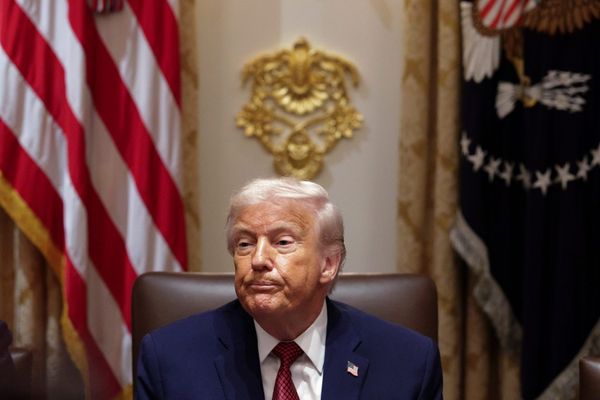
The US House committee investigating the January 6 attack on the US Capitol is holding a final public meeting on Monday, when it is expected to decide whether to issue criminal referrals for former president Donald Trump and his allies.
The event, which comes just before the release of the committee’s final report, marks the end of a panel which has led the inquiry since the January day when more than 2,000 rioters breached the US Capitol building.
Here is an explanation of what the panel is and what work it has done.
How did the panel come together?
In the days and months after the riots at the US Capitol, members of Congress began calling for a committee to investigate the attack and how Trump supporters were able to breach one of the nation’s most significant governmental buildings. But from the beginning, Democrats and Republicans couldn’t agree on how the investigation should look.
In February 2021, leaders on the House homeland security committee tried to convene a bicameral commission modeled after the one that investigated the 9/11 terrorist attacks, but disputes between Democrats and Republicans over its makeup and focus derailed negotiations. The commission was ultimately blocked by Senate Republicans.
Democrats pivoted to launching a special investigative committee, and in June 2021, House Democrats voted 220-to-190 to establish the select committee to investigate the January 6 attack on the United States Capitol.

Who served on the panel?
Two Republican lawmakers – Liz Cheney of Wyoming and Adam Kinzinger of Illinois – joined Democrats in voting to create the select committee, and both became members of the panel. They were joined by seven Democrats: Bennie Thompson of Mississippi, Zoe Lofgren of California, Adam Schiff of California, Pete Aguilar of California, Stephanie Murphy of Florida, Jamie Raskin of Maryland, and Elaine Luria of Virginia. The House speaker, Nancy Pelosi, selected Thompson to chair the committee and Cheney to serve as vice-chair.
How did the panel conduct its investigation?
Committee members and staff conducted more than 1,000 witness interviews and reviewed over a million documents and hundreds of hours of video. They obtained a huge number of call records, text messages and emails through subpoenas and also got access to White House records from the National Archives.
What was the focus of its investigation?
The committee assembled five teams to investigate different topic areas and assigned each team a color, the Guardian has previously reported. The issues ranged from efforts by Trump and his associates to pressure federal, state and local officials to overturn the election to law enforcement and intelligence agency failures. They also examined domestic extremist groups such as QAnon, and online misinformation, those who planned the January 6 rally, the “Stop the Steal” movement and the money behind efforts to overturn the election.
How many public hearings did the panel hold?
The committee held one public hearing in July 2021 on the law enforcement experience on January 6 and then nine public hearings from June to October 2022. The final hearing is scheduled for 19 December, when the committee is expected to issue criminal referrals and cue up its final report for full release on 21 December.
Who served as witnesses and who provided some of the most notable interviews?
The committee has interviewed over 1,000 witnesses, many of whom are close allies of Trump, Department of Justice officials or Republicans serving on the state and local level. They interviewed members of Trump’s family, including his daughter Ivanka and son-in-law Jared Kushner, former attorney general Bill Barr, Trump’s 2020 campaign manager Bill Stepien, and Greg Jacob who served as general counsel for former vice-president Mike Pence.

Cassidy Hutchinson, a former White House aide, provided compelling testimony during a televised hearing about Trump’s alarming behavior during the riots and how White House officials knew that attendees would be armed and were planning for violence.
US Capitol police officers also provided testimony, including Carolina Edwards, who was the first officer injured in the riots and described the scene at the US Capitol as an “absolute war zone”.
Wandrea “Shea” Moss, a former Fulton county, Georgia, election officer, testified about the harassment she and her family faced from Trump supporters in the wake of the 2020 election.
Notably missing from the witness list is Trump himself, who the committee voted to subpoena in October. Trump has refused to cooperate and sued the committee to block the subpoena.
How did the panel handle Trump allies who denied its subpoenas?
The committee has referred four Trump allies to the justice department for refusing to cooperate. Two of them, Steve Bannon and Peter Navarro, have been criminally charged, and Bannon was sentenced to four months in prison in October but is currently free while he appeals his conviction. The justice department chose not to charge former White House chief of staff Mark Meadows and former deputy chief of staff Dan Scavino.
Before Meadows stopped cooperating, he provided the committee with thousands of emails and text messages implicating prominent Republicans in an effort to overturn the results of the election.
What will be in the final report?
While the exact contents of the final report are still unknown and could change, it’s expected to be eight chapters and include information that hasn’t yet been made public. The committee is also expected to eventually release transcripts of many of its witness interviews.







